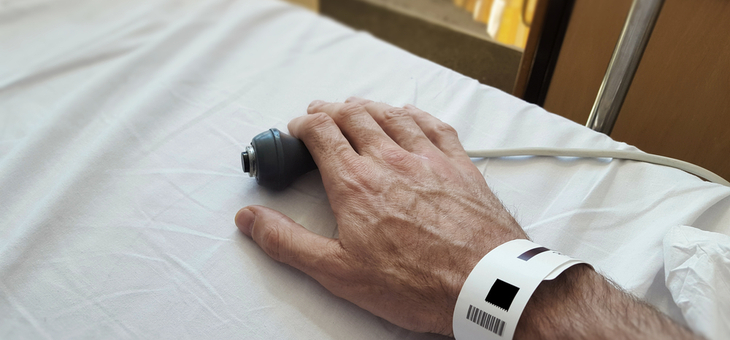Long wait times for non-emergency surgery are a constant bugbear of governments.
Now, a new guide outlines average wait times for elective surgery and emergency care in public hospitals and the longest wait times for certain treatments.
Australia’s public hospitals are busy, so all treatments are prioritised depending on urgency.
If a doctor recommends a procedure that isn’t an emergency, it is known as elective surgery and patients will likely be placed on a waiting list.
Read more: Longer waiting times for elective surgery and emergency care
Examples of elective surgery include joint replacements, cataracts and removal of a breast lump.
Wait times vary depending on the treatment and the public hospital, but some people will wait almost a year.
In March 2020, most elective surgeries were put on hold due to the pandemic.
According to the Australian Institute of Health and Welfare (AIHW), 9.2 per cent fewer Australians were admitted for elective surgery in public hospitals in 2019-20, despite the number of people waiting for surgery rising by 2.1 per cent in the 12 months prior.
Which elective surgery treatments have the longest waiting lists?
Of the 25 most common surgeries in Australia in 2019-20, the longest wait time was for septoplasty (surgery to fix a deviated nasal septum), with a wait time of up to 277 days.
Other treatments with significant wait times included total knee replacement (up to 223 days), myringoplasty/tympanoplasty (to repair a hole in the ear drum – up to 214 days) and total hip replacement (up to 120 days).
Those treatments aren’t considered emergencies, but can obviously be painful and debilitating. And the conditions are likely to deteriorate while waiting, which is why elective surgery wait lists are a problem for many Australians who do not have health insurance.
What is the average wait time on a public hospital waiting list?
Across all treatments in Australia, the average wait time on public hospital waiting lists is about 39 days. However, some of the most common treatments have wait times of almost a year.
The average wait time also doesn’t include time taken to see a GP and a specialist, which can add months.

Anyone with private insurance can be treated by their own doctor or surgeon, so may not have to wait as long and may be treated at a private hospital instead of a busy public hospital.
The only way a wait time can be waived as a public patient is if the condition worsens significantly and is considered an emergency.
Read more: The risks – and rewards – in delaying elective surgery
While private hospitals also have waiting lists for elective surgeries, they are often much shorter. Private patients also have more control over treatment, such as choosing a doctor, treatment options and when and where a surgery is performed.
Waiting time in an emergency room is affected by a patient’s triage category. This is how urgent the medical staff perceive the need for medical care.
- Category 1: Resuscitation – to be seen immediately
- Category 2: Emergency – to be seen within 10 minutes
- Category 3: Urgent – to be seen within 30 minutes
- Category 4: Semi-urgent – to be seen within 60 minutes
- Category 5: Non-urgent – to be seen within 120 minutes.
AIHW data found that 74 per cent of patients who visited accident and emergency departments in 2019-20 were seen on time according to their triage category.
However, this doesn’t take into account time waited between arriving at an emergency room and seeing a triage nurse.
Do you have to pay for care in the public hospital emergency department?
Medicare cardholders are unlikely to be charged any out-of-pocket expenses for emergency care when they visit a public hospital.
Will patients have to pay gap fees?
Sometimes. Some treatments may involve a cost not covered by Medicare or private health insurance. This is known as a gap. It occurs when a doctor charges a fee that is higher than the Medicare Benefits Schedule (MBS) fee and an insurer won’t cover the difference.
Some funds have a ‘known gap’ scheme so a patient is aware of some out-of-pocket costs before any treatment or procedure.
Private insurance will only cover a patient formally admitted to a private hospital as an inpatient. This means a doctor has determined he/she needs hospital care.
Patients arriving at a private hospital emergency department who are not formally admitted, are considered outpatients and won’t be covered by some health funds.
Read more: Private health rebate levels are dropping, what does that mean?
Where to find the best private hospital cover?
Everybody has different needs. What’s best for one person may be too expensive or inadequate for somebody else. That’s why it’s a good idea to shop around and compare hospital cover.
What is the longest wait time you’ve experienced for public hospital surgery?
This guide is opinion only and should not be taken as medical or financial advice. Check with a financial professional before making any decisions. This article is edited from the original ‘Are public hospital wait times too long?’ published on www.healthinsurancecomparison.com.au. YourLifeChoices is owned by Compare Club.
If you enjoy our content, don’t keep it to yourself. Share our free eNews with your friends and encourage them to sign up.

